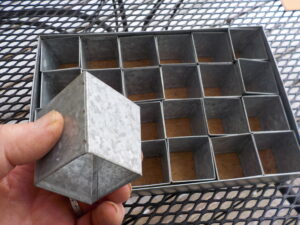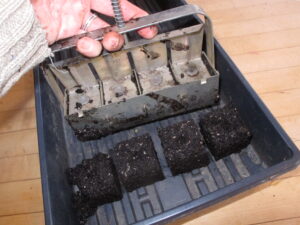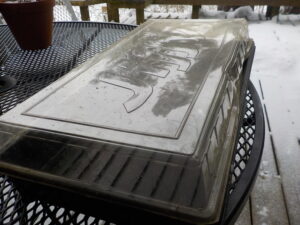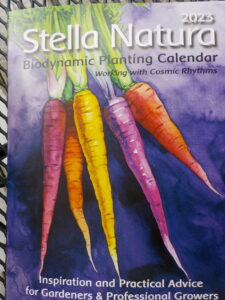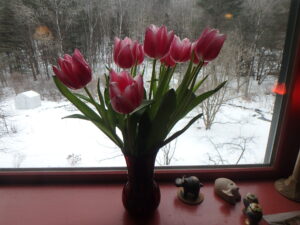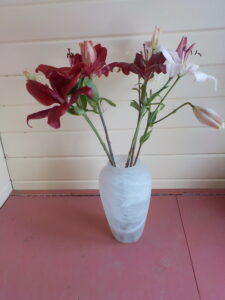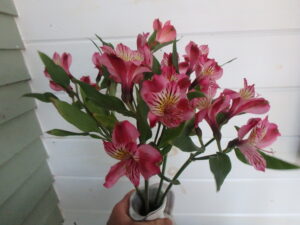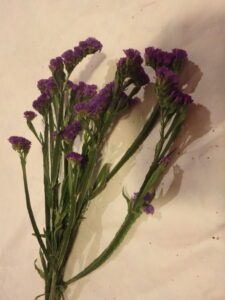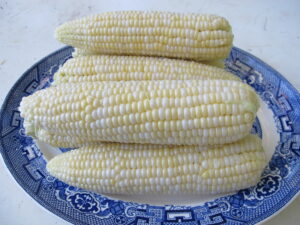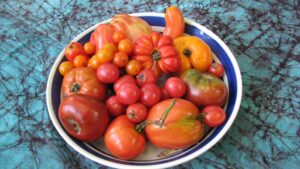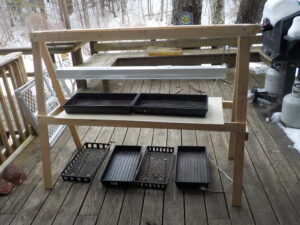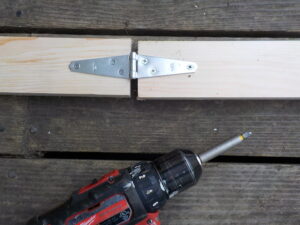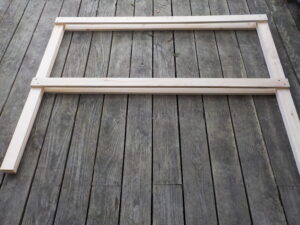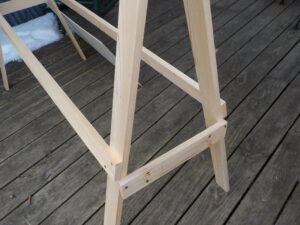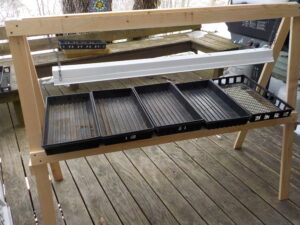Get Ready to Start Seedlings Indoors
Gardeners Supply Company has been offering ways of reducing single-use plastics like those 6-packs sold everywhere. They have sturdy reusable plastic trays for seed starting which have been available for a few years. This year they came out with metal seed starting trays.
If you don’t mind extra work and lots of mess, you can make soil blocks using a little metal press that produces 2-inch soil blocks. The mixture includes peat humus, compost, soil, blood meal and minerals. E-mail me for more info about the process.
Most seeds will wake up and grow more readily if you place them on a warm base. Electrical seed-starting mats are great for that, but not really necessary. I use them for things that specify warmer temperatures, like the flower Lisianthus, and for hot peppers.
You can contain moisture by buying and using clear plastic covers for your flats of seedlings. They are inexpensive and reusable. Take them off after everything has germinated, or most things.
Tips for Buying and Enjoying Cut Flowers
Winter drags on, even though the days are getting longer. The sun is often lurking behind gray clouds, and on a good day we only get about 9 hours of light. I do miss the colors of summer, so I keep fresh cut flowers on our table – even though I have to buy them.
Here are some things you can do to promote longer vase life: cut off leaves that would enter the water in your vase. Leaves will rot, promoting growth of bacteria, which will impede water take-up. Cut off half to three quarters of an inch of each stem every few days, and change the water. Use the packets of white powder that often comes with flowers – it does help.
- Lisianthus: These look like silk flowers to me: perfect white, pink or lavender-colored bell-shaped flowers on long stems. Tough to grow in the garden, they are perfect in a vase – I’ve kept them for up to 3 weeks.
- Miniature carnations: Each stem has 2-4 blossoms. They come in a variety of colors. Mix dark red “minis” with red roses to make a bouquet of roses look fuller. And even after the roses go to Valhalla, the carnations will still be good!
- Chrysanthemums: These come in a variety of sizes and colors, from the huge spider mums to little guys. I love the scent of the flowers –it’s not overpowering, but it’s there if you sniff them.
- Statice. I grow these for use as dry flowers, which tells you that they really do last forever – even out of water. They come in blue, purple, pink and white.
-
Spray roses: Instead of a single blossom per stem, these have 2-5 blossoms, giving you more bang for your buck. These will last about a week – or even more with proper care
- Alstromeria: One of the best for long life. Each long stem has clusters of 2-inch lily-like blossoms in pinks and reds, with yellow throats. If you buy them in bud, they will look good for three weeks!
- Orchids: While not cheap, orchids as cut flowers can last up to a month. I love dendrobiums, though they are not common, even in floral shops. Cymbidiums have bigger blossoms and also last extremely well.
- Kangaroo paws: These Australian natives are fuzzy and cute. They come in pinks, reds, orange and brown, and last very well. Not every florist will have them.
- Asiatic lilies: I recently got a bouquet of five nice stems grown in New Hampshire that was sold at my local Coop food store. For $12.95, they will bloom with great elegance.
You may wish to ask where the flowers you plan to buy are from. Holland, Columbia, Ecuador and Kenya are the world’s top growers and export much of what is available. Some foreign growers have been criticized for producing flowers using strong pesticides and poor labor practices. The Sun Valley group in California is an excellent major American grower of cut flowers – but there is still the environmental cost of shipping them 3,000 miles to us. If you can buy flowers grown locally in greenhouses, do it!
The Benefits of Organic vs Chemical Soil Treatment
To reduce other variables, Dr Phelan brought the soil to his greenhouse, and potted it up in large containers. He then grew corn in containers, adding chemical fertilizers in some, fresh cow manure in some, and composted manure in others, using both types of soil for each method. When the corn was at the appropriate size, he released corn borers into the greenhouse, and watched what happened.
In another experiment, Dr. Phelan grew soy beans hydroponically, varying the amount of nutrients present. The soy bean loopers preferred plants that were out of balance nutritionally. But not just nitrogen mattered. Iron, boron and zinc levels were important, too. And of course, those elements are not present in conventional fertilizers. Chemical fertilizers only offer nitrogen, phosphorus and potassium. Good soil enriched with compost should have everything your plants need.
He attributed much of the difference to hormone signaling. Anti-fungal proteins can be produced when specific genes are activated, protecting leaves. He explained that depending on the environmental conditions specific genes are turned on or off. He was able to show this by photographing specific genes in the leaves of the tomatoes to see their size and thus their levels of activity. It appears that something in the vetch stimulated the tomatoes to produce those anti-fungal proteins.
Building a Simple Plant Stand
As I write this, the wind chill factor is well below zero, and summer seems a lifetime away. But if you are thinking about starting seeds indoors this year, this would be a good time to build a simple wooden plant stand. You don’t have to be a carpenter to build this, or to have expensive power tools. Your local lumber yard will cut the pieces you need.
Mine is a simple A-frame, with one shelf, and the space for more plant flats on the floor. It stands about 4 feet tall, is 5 feet wide from end to end, and 2 feet from front to back at the base. It has space for 4 or 5 flats or trays, each of which will hold at least 32 plants – more if you buy the smaller six-packs that I avoid (some flats can hold 48-72 plants). And if at a later time you want to grow more plants, you can put another four flats or more on the floor and add lights above them.
The lumber for this cost me about $50 and the light fixture – a simple shop light with 2 four-foot LED bulbs and a plug-in cord – cost $62, although often they are more expensive. Looking at catalogs, I see that one can easily spend much more for a pre-made plant stand. If you decide you like starting plants in the house, you could buy the extra lights next to illuminate more flats on the floor.
Most lumber yards will cut all your materials to size for you, but do not have small sheets of plywood. I found that Home Depot does have plywood in 2-foot by 4-foot sheets, and they cut mine to give me a piece 18” by 4’ for the shelf. You will need to ask them to cut the 1×3 pine boards as follows: four 60-inch pieces, four 48-inch pieces, and two 16”pieces.
Start by making 2 legs for your plant stand. Lay the 4-ft pieces end-to-end on the floor. Do it on your deck if possible, or next to a wall so that you can get them in a straight line by lining them up with something that is straight. Lay the hinges in place so that you will be able to fold them closed (most hinges only close one way). A cordless drill with a magnetic bit for Phillips screws will make your work much easier. To start the small screws on the hinges, make a hole first with a nail or awl, or a tiny drill bit.
Next close up the hinged legs and place them 5-ft apart on the floor. Place 2 of the 5-ft pieces on top of the first side. One should be screwed right at the top, one 24 inches from that. Flip over the stand, and do the same on that side. Stand it up, and spread the legs 2 feet apart at the bottom. Then add a cross brace on each end of the A-frame just below support pieces for your shelves.
Lastly you need to hang the light. Mine came with S-hooks and chain, which made hanging the lights easy. If yours do not, you will have to buy them. Most shop lights have slots and holes on the back side so that you can slip in S-hooks easily to hang it. You can also open a link of your jack chain and fit it in without an S-hook, just use 2 pairs of pliers to bend a link open. Screw 2 small cup hooks into a top cross piece and attach the jack chain. The chain will allow you to raise or lower the light – lights should be about 6 inches above the plants.
Starting seedlings indoors is miraculous for me – even after doing it for decades. I hold my breath waiting for germination, and fuss over the seedlings like a mother hen. And when I bite into my first tomato in August, I have the added satisfaction in knowing I brought that tomato into my world – with lots of help from Mother Nature.



